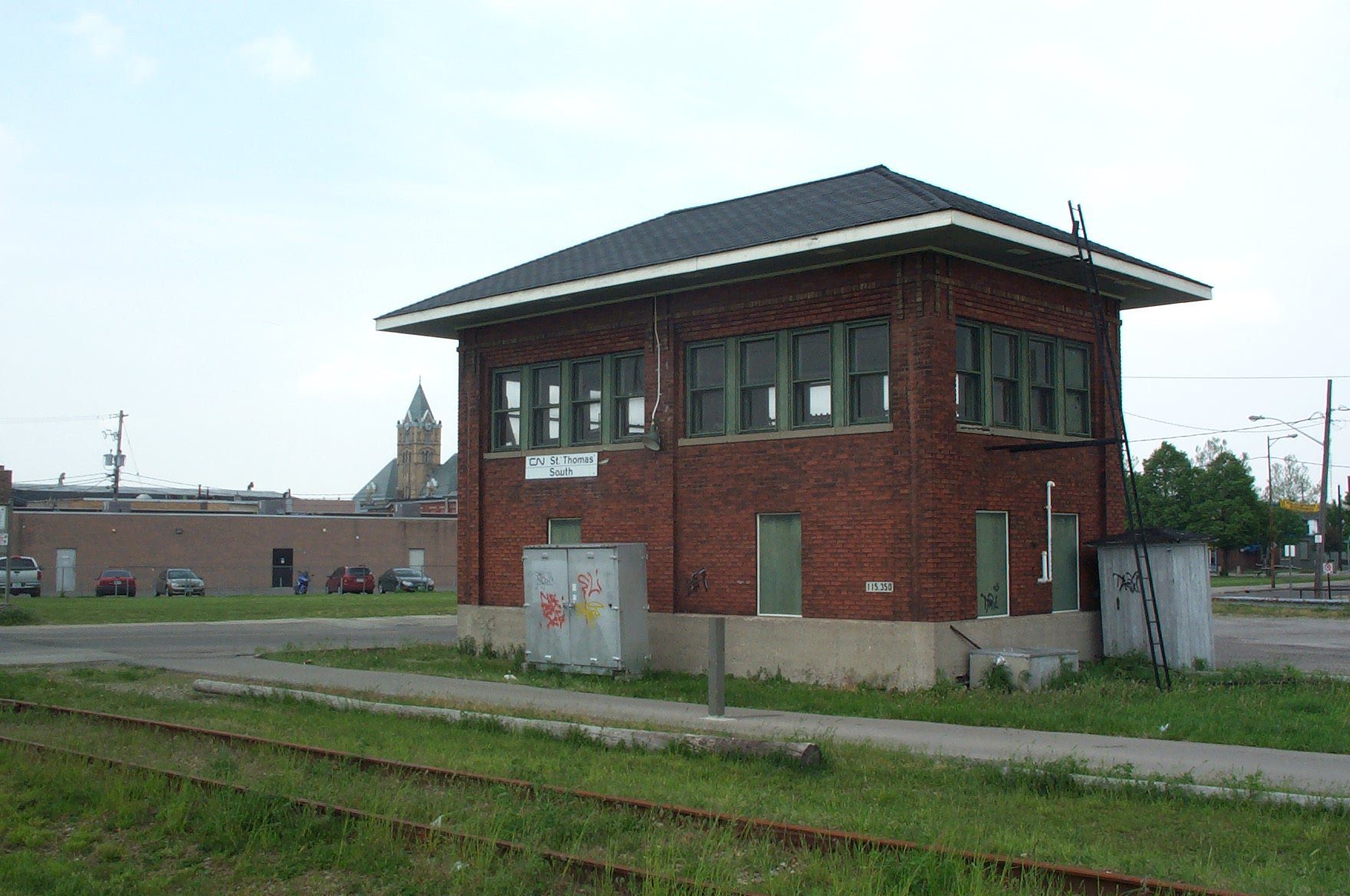Inducted in 2016
During the Canada Southern Railway’s early years, switches were placed along the rail line and operated manually from small huts. This method soon proved dangerous for the growing railway industry in St. Thomas. On July 15, 1887, the worst railway accident in the history of St. Thomas occurred. A northbound London & Port Stanley Railway picnic excursion train collided with a Michigan Central freight train, hitting two oil tankers. Upon impact the first tanker exploded, sending flaming debris into the air. Within minutes the second tanker ruptured, engulfing a section of Talbot Street and beyond with flaming oil. The wreck claimed fourteen lives and injured another sixty-eight.
As a response to this accident, and to increase safety, the BX Tower was built around 1910, housing switches for the Michigan Central and London & Port Stanley Railway crossing. The “interlocker system” was considered a major improvement in railway safety. The system required switches, signals, and derailers to be thrown from a central location (The BX Tower) in correct sequences. The tower continued to operate into the 1980s, well after the station closed to passenger service.


